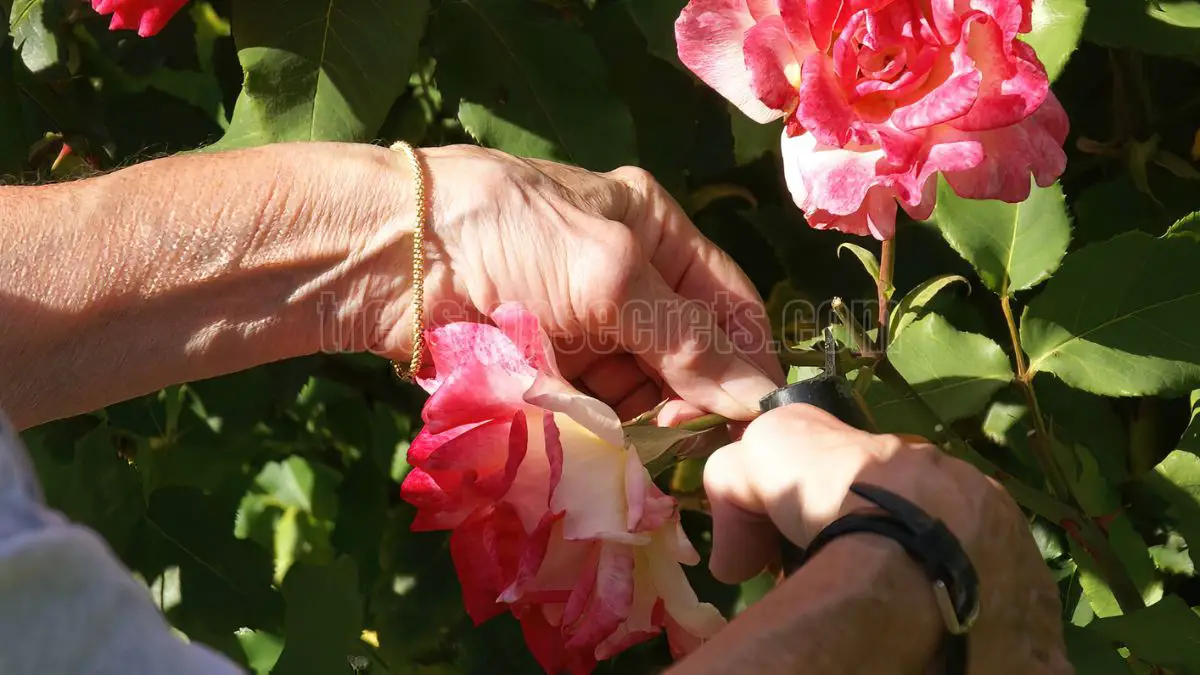As winter approaches, taking the right steps to prune your roses is essential for their health and beauty in the coming spring. Proper winter pruning not only enhances the shape of your rose bushes but also encourages robust growth and vibrant blooms. In this guide, we’ll walk you through the best practices for winter rose pruning, ensuring your garden flourishes year after year.
Pruning roses for winter involves trimming the plant to remove dead or damaged stems and promote healthy growth. This practice helps prevent diseases and improves air circulation, ensuring the rose bush remains strong through the cold months. Properly pruned roses can produce abundant flowers in the spring, making it a vital task for any rose gardener.
Are you ready to give your roses the care they need to thrive this winter? By learning how to prune effectively, you can set your garden up for stunning blooms next season. Don't miss out on expert tips and techniques that will make your roses the envy of the neighborhood!
Timing for Pruning Roses
Pruning roses is all about keeping those blooms looking their absolute best. By knowing when to snip away, you're not just helping them grow better, but also keeping them safe when winter rolls around. Let me share what I've learned about the right moments to get those clippers out, along with some thoughts on handling them during the fall.
Best Time for Pruning
The sweet spot for pruning roses falls in late winter or early spring, right when you start noticing the first signs of new growth. This can vary quite a bit depending on where you live, so you could be pruning anywhere from January to May. Here's a simple rundown of when to grab your shears:
| Season | Pruning Action | Timing |
|---|---|---|
| Late Winter | Big pruning job | January - March |
| Early Spring | Final touch-ups as growth kicks in | Late March - Mid-April |
| Summer | Snipping off dead flowers | Throughout the summer |
| Fall | Light trims after frost to avoid damage | After first killer frost |
Fall Pruning Considerations
When fall rolls in, there’s some debate about what to do. Sure, some folks go for fall pruning, but heavy pruning is best left for winter or spring. Going too hard in fall can wake up the plants too soon, leaving them vulnerable to frostbite (Iowa State University Extension and Outreach).
But don’t ignore them altogether. After that first hard frost, it’s a good idea to trim back longer branches to prevent winter breakage. Dead, broken, or sickly branches should be chopped off as well. Oh, and don’t forget to clean your tools! This keeps any nasties from spreading (Garden Design).
In short, my strategy is to tackle the major pruning chores when winter says goodbye and spring starts waving hello, with a watchful eye on them during fall to get them through the colder months in tip-top shape. Keeping this balance means my roses get to shine and flourish all year-round.
Basics of Rose Pruning
Got roses? Trimming those thorny beauties might seem like a headache, but trust me, it's easier than it looks. Let me spill the beans on what I've found about the art of snipping roses and some tricks I've picked up to keep my rose garden thriving.
Importance of Pruning Steps
Having a game plan for chopping those rose bushes can make all the difference. Here's my eight-step routine that keeps those blooms poppin' and my neighbors guessing my secret:
- Ditch any leftover leaves.
- Snip out the dead wood.
- Let the plant's core breathe a little, open it up.
- Say goodbye to the weak, thin branches.
- Trim up the remaining canes.
- Give those fresh cuts a little TLC—seal 'em up.
- Tidy the area like a boss.
- Feed those babies after their haircut.
Stick to these steps, and your roses will thank you by looking fabulous (Garden Design).
Pruning Techniques for Healthy Roses
Getting those cuts just right is key, and timing matters. Early spring rolls around, and I'm all about getting the garden shears out. Winter can be rough, so this timing helps get rid of the dead stuff. My aim? To trim and tease the branches just enough for sunshine and breeze to do their thing (Iowa State University Extension and Outreach).
For those trendy roses—like hybrid teas, floribundas, and grandifloras—I like to prune when the buds are starting to swell up, but before they sprout leaves. Hard pruning is my go-to: cutting back a third to two-thirds of those long canes to an outside bud. I'm aiming for around 3 to 6 sturdy canes to lead the show. Trust me, sturdy canes equal wow-factor blooms (NYBG Mertz Library).
Here's my quick cheat sheet for different roses:
| Rose Type | Pruning Time | Pruning Technique |
|---|---|---|
| Hybrid Tea, Floribunda, Grandiflora | Early Spring (Half buds swollen) | Trim ⅓ to ⅔ of cane length to an outside bud; keep 3-6 canes |
| Repeat Blooming Modern Shrubs | Early Spring | Cut main canes back by half; trim side shoots to two buds; thin oldies |
| Once-Blooming Old Garden Roses | After flowering | Gentle pruning to keep looks and ditch the dead wood |
With a bit of know-how, your roses will be bursting with color and life each season, making you the talk of the block.
Specific Pruning Guidelines
When I get into my gardening groove, pruning roses is my go-to therapeutic exercise. It's like plant therapy, but for me! Each rose bush I tend to has its own quirks and preferences; knowing those helps me nurture them into blooming beauties.
Landscape Roses Pruning
Landscape roses are like that friend who never demands much but is always a joy to have around. They like it easy-breezy. During spring, I keep it chill and follow these simple steps:
| Step | Action |
|---|---|
| 1 | Snip away any old or lifeless wood. |
| 2 | Give the plant a haircut, trimming it to about half its size. |
These roses are tough little guys, which is why they're a top pick for anyone hoping to dodge a high-maintenance gardening drama.
Climbing Roses Pruning
Now, climbing roses are a bit more… particular, especially when they're younger. For the budding first three years, I give them a gentle touch by clearing out only the dead, injured, or sickly bits. Once they hit the mature phase, here's my game plan:
| Age of Rose | Pruning Action |
|---|---|
| 0-3 Years | Only trim out the dead, damaged, or diseased wood. |
| After 3 Years | As spring starts to whisper in, cut back side shoots to two or three buds (just about half a foot). It's also a great idea to cut older branches to the base to give mature climbers a growth spurt. |
This method helps me train my climbing roses to build a solid structure while keeping their performance in the bloom department top-notch.
Seasonal Pruning Tips
Winter winks at me with a promise of frost, and I get my shears ready. After Jack Frost has swung by, I get down to business with these pointers:
| Step | Action |
|---|---|
| 1 | Snip those longer stems to stop them from bending like gymnasts during icy gales. |
| 2 | Axe any dead or ailing branches. |
| 3 | Thin out the weaklings. |
| 4 | Give my tools a good cleaning, so no nasties hitch a ride come next pruning session. |
With a little winter TLC, my roses are set to bounce back come spring, looking fresh and ready to flaunt their floral charms.
Pruning Different Rose Varieties
When it comes to trimming roses, turns out, it's a bit like giving them a haircut just before winter rolls in. Every type's got its own personality, and I’ve gathered some handy tips for sprucing up hybrid tea, floribunda, grandiflora, repeat-blooming climbing roses, and those charming once-blooming shrub and old garden roses.
Hybrid Tea, Floribunda, and Grandiflora
Listen up, these guys like a trim in early spring, late March to mid-April-ish. Around that time, you'll notice the buds look puffy, but the leaves aren't quite there yet. I take those canes down to one-third or two-thirds of their length, leaving about 3 to 6 sprouting canes. Snipping them hard now means they'll grow back with gusto and flaunt more flowers later.
| Rose Type | Pruning Time | Pruning Length |
|---|---|---|
| Hybrid Tea | Early Spring | ⅓ to ⅔ off the canes |
| Floribunda | Early Spring | ⅓ to ⅔ off the canes |
| Grandiflora | Early Spring | ⅓ to ⅔ off the canes |
Dead wood? It's gotta go. Now's the time to cut at least an inch below any brown bits from winter. I do a little extra snip about a quarter inch above healthy buds that face out, not in.
Repeat Blooming Climbing Roses
These climbing beauties are a bit different, growing flowers on fresh shoots and older canes alike. So when I’m snipping, I take the main canes back by half, with laterals getting down to two buds. If any branches have been lazing around for more than three years, they’re out too, making space for fresh, young stems.
| Rose Type | Pruning Time | Pruning Instructions |
|---|---|---|
| Repeat Blooming Climbing Roses | Early Spring | Main canes back by half, laterals to 2 buds |
| Trim out branches over 3 years old |
Once-Blooming Modern Shrub and Old Garden Roses
For these one-hit wonders, I generally give them a snip within a month of their big show. This keeps them happy and sets them up for next season's antics. If they’re the types that can't resist popping blooms multiple times, the cutting’s done late March or early April as the first buds start nudging through.
The schedule might shift depending on where you are, but when the plants drop hints with swelling buds or fading blossoms, that's the signal to grab the shears.
| Rose Type | Pruning Time | Pruning Guidelines |
|---|---|---|
| Once-Blooming Modern Shrub | Within a month after flowering | Prune right after they bloom |
| Old Garden Roses | Within a month after flowering | Prune right after they bloom |
| Repeat Blooming Roses | Late March or early April | As buds start to break |
Sticking to these tips ensures my roses stay perky and picture-perfect through the winter, bursting back to life in the spring with gorgeous blossoms.
Tools for Pruning Roses
When it comes to getting my roses ready for winter, the first thing I do is make sure I've got the right gadgets to make this process easy-breezy. Having the right stuff not only makes pruning a snap, but it keeps my rose bushes looking snazzy and in top shape.
Essential Pruning Tools
Here's my go-to list for keeping those roses in check:
| Tool | Description |
|---|---|
| Secateurs | These handy tools are like my trusty sidekick for snipping smaller bits. For the best snips, I always choose bypass blades over those anvil ones—smooth cuts make happy plants! Fine Gardening. |
| Loppers | Perfect for those bigger branches, loppers are like secateurs on steroids with their long handles. They make the big jobs feel small! Fine Gardening |
| Folding Pruning Saw | Sometimes, the branches look like they ate their Wheaties, and that's where this tool shines. It slices through those beefier parts that make secateurs and loppers cry. Fine Gardening |
| Gloves | Those pesky thorns? Not a problem with a good pair of gloves. Gotta keep those hands thorn-free! |
| Disinfectant | I'm a firm believer in keeping things clean, especially my tools. A quick wipe keeps pesky diseases at bay after each trim. |
Proper Tool Selection
Picking the right tool feels a bit like choosing the right playlist for a road trip—it sets the mood! Here's what goes through my mind:
- Secateurs: Bypass style is all the rage for me because they slice without a bruise in sight. Perfect for neatening up those smaller cuts.
- Loppers: When I'm reaching for the stars (or those high-up branches), extendable handles on loppers give me superpowers. They handle the big stuff with ease.
- Folding Pruning Saw: If secateurs and loppers aren't tough enough, this baby steps up. Great for thicker canes, it's a must-have in my pruning kit.
With the right tools by my side, tackling the rose garden feels more like a fun project than a chore. Plus, my plants get the best shot at a cozy winter nap!
Pruning Tips and Techniques
Keeping my roses in tip-top shape calls for some solid pruning know-how. It’s all about fending off pesky plant diseases and giving my climbing roses a little nudge in the right direction.
Disease Prevention and Disinfection
Pruning isn't just for making my roses look pretty—it’s like giving them a shield against nasty bugs and diseases. Once I’ve snipped away the unwanted branches, I take a step back to size up the stars of the show. I zero in on those hardy canes with buds ready to burst or side shoots waiting in the wings. Getting rid of any dead or busted wood is a must, since those spots can turn into pest motels or disease breeding grounds.
| Common Diseases | Prevention Tips |
|---|---|
| Black Spot | Keep air flow breezy and skip the overhead sprinkling. Snip off sick bits pronto. |
| Powdery Mildew | Trim for better airflow and break out the fungicides if needed. |
| Rust | Nip infected leaves and give the plants some breathing room. |
By snipping regularly, my roses stay open and breezy, cutting down the odds of getting sick. Plus, I keep my tools clean as a whistle between cuts, so no uninvited guests get passed around.
Training Climbing Roses
Getting my climbing roses to behave is part two of the care plan. When spring rolls around and the buds start to pop, I dive into ditching the dead canes. They’re like freeloaders—not helping anyone grow.
With those dead canes out of the picture, it’s time to wrangle the long stems onto their supports. My job? Build a strong, healthy frame that’s bursting with blooms next season (Fine Gardening). To do this, I make strategic cuts to get the side buds going the way I want.
Pinning the main branches onto supports, preferably getting them as near horizontal as possible, is key. Lateral shoots get trimmed back to just a handful of buds, steering growth perfectly.
| Steps for Training Climbing Roses | How-To |
|---|---|
| Remove Dead Canes | Ditch the duds in spring for fresh growth. |
| Train Long Stems | Line up canes on supports for a nice, strong backdrop. |
| Shorten Lateral Shoots | Trim those shoots to just a few buds for peak health. |
I'm always watching for sneaky suckers coming up from below the bud union—those can overpower my precious top sections. Regular upkeep and training keep my climbing roses in top form, turning my garden into a real head-turner. Sticking to these tactics, I’ve got roses all set to dazzle with their blooms come next season.
Final Thoughts
How to Prune Roses for Winter: Your Path to Vibrant Blooms Pruning your roses for winter is more than just a task; it’s a crucial step to ensure their health and beauty for the next blooming season. By following the tips in this article, you’ll not only protect your plants from winter stress but also encourage a robust spring revival. Start pruning today for a stunning garden tomorrow!
FAQs about "How to Prune Roses for Winter"
Q: When is the best time to prune roses for winter?
A: The ideal time to prune roses for winter is late fall, after the first frost. This timing helps reduce stress on the plants and prepares them for the dormant winter months.
Q: How much should I prune my roses for winter?
A: Prune about one-third to one-half of the plant, focusing on dead or weak stems. Always cut at an angle just above a bud to encourage healthy new growth.
Q: Should I use special tools for pruning roses?
A: Yes, using sharp, clean pruning shears is essential for making precise cuts. Consider wearing gloves to protect your hands from thorns.
Q: Can I prune all types of roses the same way for winter?
A: While most roses benefit from similar pruning techniques, certain varieties, like climbers, may require different approaches. Always check specific guidelines for your rose type.
Q: What should I do with the clippings after pruning?
A: Discard or compost the clippings, especially if they show signs of disease. This practice helps prevent pests and diseases from affecting your garden.
Q: How does winter pruning benefit roses in spring?
A: Winter pruning promotes better air circulation and sunlight exposure, reducing disease risk and encouraging more vigorous growth and blooms come spring.
Image Source: Paid image from CANVA




